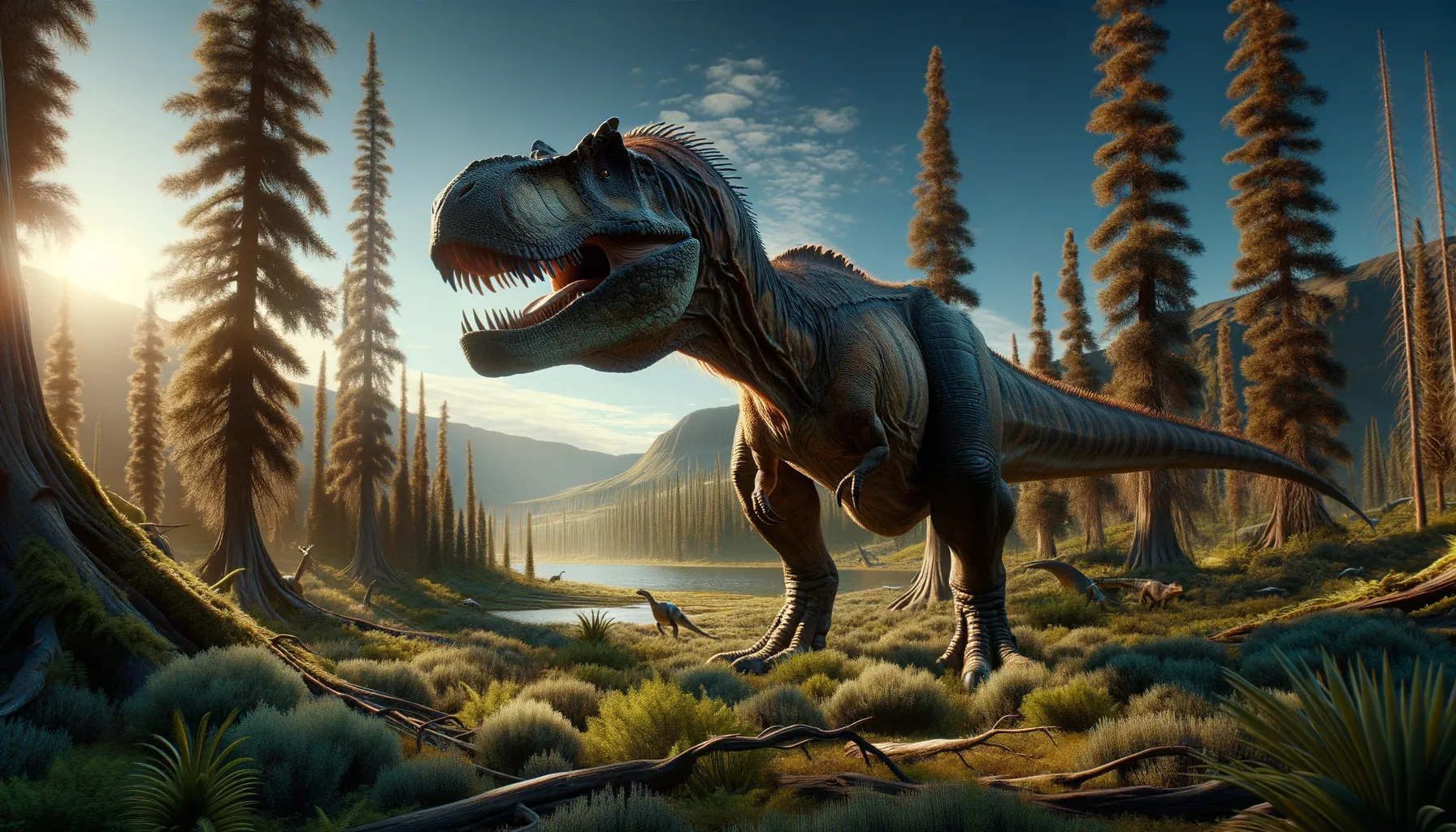
Albertosaurus
A swift hunter from the prehistoric past.
Period
Cretaceous
Length
About 30 feet long from head to tail.
Height
Approximately 10 feet tall at the hip.
Weight
Around 4,000 to 6,000 pounds.
Albertosaurus was a carnivorous dinosaur that roamed North America during the Late Cretaceous period. Known for its large size and impressive speed, it was one of the top predators of its time. With strong jaws and sharp teeth, Albertosaurus was well-equipped for hunting, preying on various herbivorous dinosaurs. Its fossils have mainly been found in Canada, providing valuable insights into the ecosystem of ancient times.
Diet
Albertosaurus was a carnivore, primarily feeding on other dinosaurs. It hunted large herbivores and possibly scavenged for food when necessary.
Hunting
This dinosaur was a formidable predator, likely using its speed to ambush prey. Its sharp teeth and powerful jaws made it an efficient hunter in its environment.
Environmental challenges
Albertosaurus faced competition from other large predators, which could have affected its hunting success. Climate changes during the Late Cretaceous might have impacted food availability. Additionally, natural disasters, like volcanic activity, posed threats to its survival.
Speed
It could reach speeds of up to 25 miles per hour.
Lifespan
Estimated to live around 28 years.
First discovery
First discovered in Alberta, Canada, in 1884.
Fun Facts
- Albertosaurus was a relative of the famous Tyrannosaurus rex and lived around 70 million years ago during the Late Cretaceous period.
- Unlike T. rex, Albertosaurus was smaller and faster, weighing about 2 tons and measuring up to 30 feet long.
- The first Albertosaurus fossils were discovered in Alberta, Canada, which is how it got its name.
- Albertosaurus had about 60 sharp teeth that it used to hunt herbivorous dinosaurs.
- There is evidence that Albertosaurus may have hunted in packs, making them more effective predators.
- Fossils of more than 30 Albertosaurus individuals have been found together, suggesting they may have lived and died in groups.
- Albertosaurus is known for its short arms, similar to its more famous cousin, the T. rex.
Growth and Development
Albertosaurus grew rapidly, reaching adulthood in its teens. Young Albertosaurs likely stayed in groups for protection, gradually becoming solitary hunters as they matured. Its growth patterns indicate a high metabolism common in large theropods.
Habitat
Albertosaurus lived in lush floodplains with abundant water sources. Its habitat consisted of forests and open plains, rich in diverse prey species. These environments provided ample opportunity for hunting and scavenging.
Interaction with other species
Albertosaurus likely competed with other theropods for food resources. It might have occasionally clashed with similar-sized predators over territory or kills. Smaller species likely avoided direct interactions due to its size and aggression.
Natural lifespan
Albertosaurus had a natural lifespan of about 28 years.
Reproduction
Albertosaurus laid eggs, likely in well-hidden nests to protect them from predators. After hatching, juveniles were probably dependent on parental care for nourishment and protection initially.
Social behaviour
While young, Albertosaurus may have formed groups for protection. Adults were generally solitary, coming together only for mating or competing for resources. Social hierarchy might have been observed during such interactions.
Fossil locations
Fossils of Albertosaurus have primarily been found in Alberta, Canada. The first significant discovery occurred in the Horseshoe Canyon Formation. These fossil sites have provided extensive knowledge about its morphology and lifestyle.
